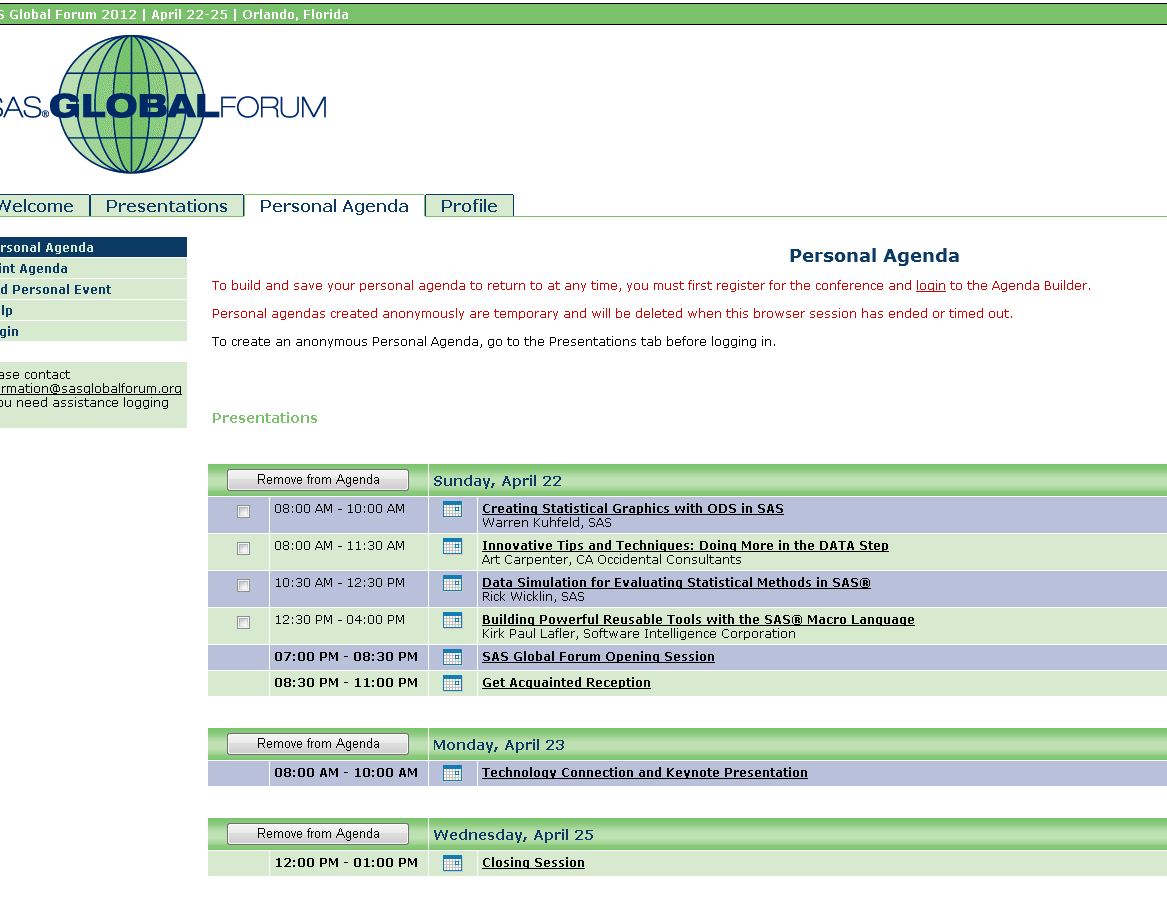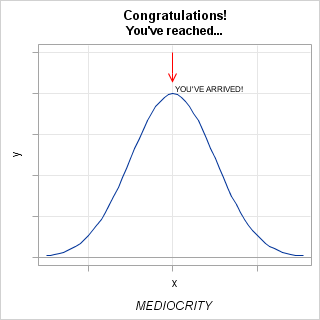All Posts

Sara started it, and I like the idea - the Unofficial Official Guide to SAS Global Forum. My contribution to this unofficial guide is “The Agenda Builder and why it matters to me." In case you're wondering, I use it to:

My colleague, Steve Serrao, just published a blog post on the proliferation of varied law enforcement approaches and their related phraseologies. After reading, I concur – hence, this blog’s title. I am not a huge fan of the term “predictive policing”. While others may love it and live it, and
We call it the "metadata profile", but really it's like a telephone number that connects you to your SAS environment. Just as a telephone number has component parts (country code, area code, exchange), the metadata profile contains information that allow you to "dial in" to your SAS servers. This information

In December of last year, the book "Statistical Graphics Procedures by Example" co-authored by Dan Heath and I was published. On the back cover, it proclaims "Free Code on the Web". Now, who can resist such an offer? Since most of the examples in the book have very short syntax,

Everyone is looking for a bargain, especially those traveling with their families to Orlando for SAS Global Forum. Orlando is the land of theme parks and attractions, many with hefty ticket prices. Since I am heading to Orlando in April myself, I have been doing quite a lot of research.
Recently, I had a discussion with a user concerning the volume of imagemap data generated for an interactive, web-based visual contain a large number of graphs. The large amount of imagemap data was causing problems with the current version of their web browser. The graphs consisted of either bar charts

So many of us struggle with this mountain. In fact, 68.27% of us get within sight of reaching the summit (while 95.47% of us are at least on a perceivable slope). We run, walk, crawl and sometimes slide our way uphill (from one direction or the other) until we finally

What is surface complexation? Everyday I have to look something up on Google or in the dictionary. For example, do you know what a Cthulhu is? I had to search for that term after I tweeted that I thought a SAS surface plot graph was beautiful. Mike Nemecek from SAS
Here are a couple of bar charts showing the city mileage of cars by Type and Origin using the SGPLOT procedure from the sashelp.cars dataset. title 'Vehicle Mileage by Type'; proc sgplot data=cars; format mpg_city 4.1; vbar type / response=mpg_city stat=mean datalabel; xaxis display=(nolabel); run; title 'Counts by Country'; proc sgplot

Note: as this is a popular topic, I've added a few notes with minor updates, including a link to a popular how-to tutorial video. In case you missed it, the first maintenance release for SAS 9.3 was recently released. Because we're all friends here, you may call it "SAS 9.3M1"

The single most costly employee benefit for any organization is health insurance, and the price is going up. From 2003-2009, the costs per hour worked for employee health insurance increased from $1.03 to $2.00. These costs continue to increase from 5%-7% per year. The reality is that employee health insurance costs will continue

Many cities and counties are taking the lead of private industry and developing 311 call centers to consolidate incoming calls for service and information requests from citizens. The business advantages are clear: Citizens have one number to call for service and information rather than having to waste time searching for

All too often an unspeakable tragedy leads to a needed policy or operational change through a newly-realized criminal justice system gap. While we continually work to minimize existing gaps, the reality is that as law enforcement evolves, so does the crime and so do the criminals. In recognition of those

SAS Global Forum 2012 is just around the corner, and even those who have attended for the past 36 years need guidance in what to do and see. I thought it might be good to create a little users guide for the event: A blog series that will showcase some
Recently we discussed the features of the Shiller Graph, showing long term housing values in the USA. To understand the features necesary in the SGPLOT procedure to create such graph easily, it was useful to see how far we can go using GTL as released with SAS 9.2(M3). I got the data Shiller Housing index data







